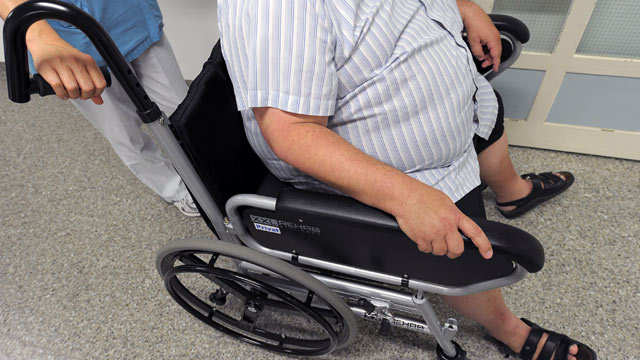A patient’s waist measurement can reliably predict their risk of complications and death after emergency general surgery procedures, according to new findings presented at the American College of Surgeons Clinical Congress 2017. While obesity is associated with poor outcomes after general surgery, the Body Mass Index (BMI), used to screen for this condition, may not be the best way to assess risk investigators say.
“The BMI has traditionally been used in hospitals to predict adverse outcomes such as heart attacks, but one of the problems with BMI is that it doesn’t take into account body fat distribution,” says lead study author Faisal Jehan, MD, a research fellow in the department of surgery, University of Arizona, Tucson. “The waist-to-hip ratio, however, specifically targets the concentration of visceral fat, which is the dangerous type surrounding abdominal organs.”
In a first-of-its-kind study, researchers analyzed data on 608 men and women who underwent emergency general surgery procedures between 2012 and 2016. All patients had computerized tomography (CT) imaging of the abdomen and pelvis before their operations, and waist-to-hip ratios were calculated from that imaging. (A healthy waist-to-hip ratio should not exceed .90 for men or .85 for women, according to the World Health Organization.)

File photo of an obese patient in a special wheelchair for overweight patients. (Image credit: David Ebener/picture-alliance/dpa/AP Images)
For the analysis, researchers divided patients into two groups, based on a waist-to-hip ratio cutoff point of one. Outcome measures included complications, length of hospital stay, mortality, and 30-day readmission. Overall, the analysis of both groups showed that the complications rate was 33 percent, median length of hospital stay was four days, mortality rate was 3.6 percent, and 30-day readmission rate was 24.8 percent.
Of the 608 adults in the study, almost 70 percent had a waist-to-hip ratio equal to or exceeding one. What’s more, these patients had a dramatically higher complications rate (44.3 percent vs 8.7 percent), hospital stay (5.7 days vs 2.8 days), mortality rate (7.7 percent vs 1.1 percent), and 30-day readmission rate (32.5 percent vs 7.1 percent) compared to those with a waist-to-hip ratio less than one.
A further analysis showed that a waist-to-hip ratio greater than or equal to one was an independent predictor of complications and death, increasing the odds by seven and six times, respectively.
The study results are important because it’s known that at least two-thirds of Americans are overweight or obese, according to the Centers for Disease Control and Prevention.2 That means there is a large population at higher risk of poor outcomes after emergency general surgery.
“Our main goal is to identify those at risk for developing complications so we can intervene appropriately and improve the health care delivered,” Jehan says. “Based on the waist-to-hip ratio, we can predict whether these patients are high risk and then take precautions to keep these patients on the radar. For example, we can call them in for postoperative examinations to check on them early and quickly, and if they do develop complications, we can quickly move them into the ICU so that we can take care of those complications.”
In addition, waist-to-hip ratio can also be easily measured at bedside with a measuring tape if patient CT scan is not available, which makes it a simple tool to identify patients at risk for adverse events after surgery, added Bellal Joseph, MD, FACS, senior author of the study and a professor of surgery at The University of Arizona Health Sciences in Tucson.
The study authors conclude that the waist-to-hip ratio, as measured by a CT scan, should be considered a part of radiology reports in emergency general surgery patients who undergo CT imaging.
“In the emergency room, we don’t have a lot of time, but we know that most emergency general surgery patients get a CT scan,” Jehan says. “The CT scan is a convenient and accessible way to get the waist-to-hip ratio.”




